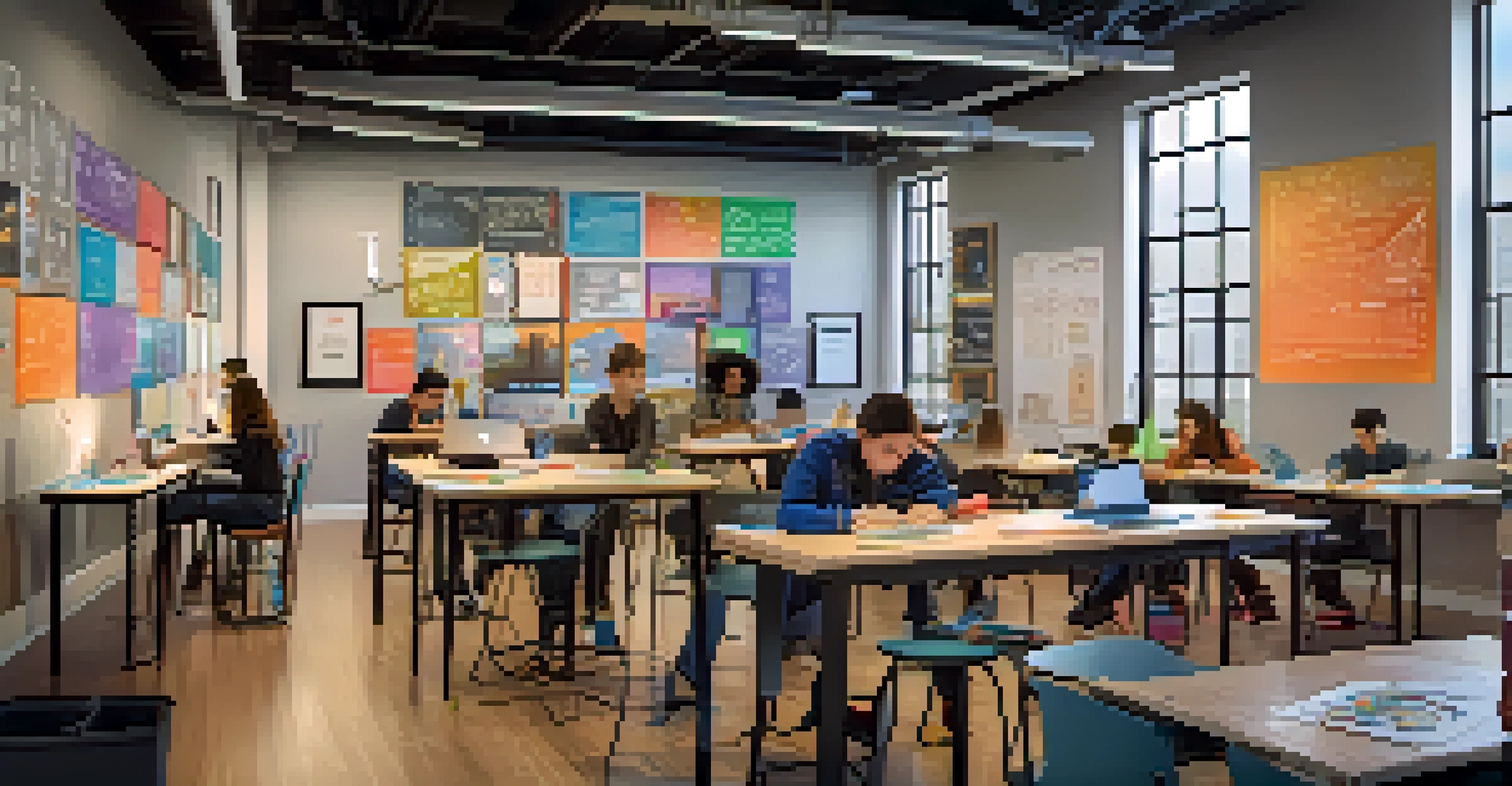The Importance of STEAM Education in Texas Schools

Understanding STEAM: An Overview of Its Components
STEAM stands for Science, Technology, Engineering, Arts, and Mathematics. This interdisciplinary approach combines these fields to foster creativity and critical thinking among students. Unlike traditional education, which often treats subjects in isolation, STEAM encourages students to see the connections and applications of their learning in real-world scenarios.
The future belongs to those who believe in the beauty of their dreams.
In Texas, the push for STEAM education is gaining momentum as schools recognize the need for a workforce that can innovate and solve complex problems. By incorporating the arts into this framework, students not only develop technical skills but also enhance their ability to think creatively, a vital asset in today’s job market. This holistic perspective is crucial for nurturing well-rounded individuals.
Beyond just academic success, STEAM education helps students build essential life skills like collaboration and communication. By working on projects that require teamwork and diverse perspectives, students learn to value contributions from all disciplines, preparing them for a future where cross-functional collaboration is key.
The Economic Impact of STEAM Education in Texas
Investing in STEAM education can significantly boost Texas's economy. The state is home to a thriving tech industry, and companies are increasingly seeking graduates with strong STEAM skills. By prioritizing this type of education, Texas can create a workforce that meets the demands of its growing economy, ultimately leading to job creation and economic stability.

Furthermore, STEAM education can help bridge the gap between education and industry. By aligning curriculum with the skills needed in the job market, schools can ensure that students are not only prepared for college but also for high-demand careers. This alignment can lead to partnerships between schools and local businesses, creating internship and mentorship opportunities for students.
STEAM Boosts Creativity and Skills
STEAM education integrates arts with STEM, fostering creativity and critical thinking essential for success in today's job market.
In the long run, a strong foundation in STEAM subjects can help Texas maintain its competitive edge on a national and global scale. As industries evolve, so too must the education system, ensuring that future generations are equipped with the knowledge and skills necessary to thrive in a rapidly changing world.
Enhancing Student Engagement Through STEAM Initiatives
One of the most compelling reasons to embrace STEAM education is its ability to engage students. Traditional teaching methods can sometimes leave students feeling disconnected from the material, but STEAM encourages hands-on learning and real-world applications. This approach makes learning more relatable and exciting, igniting a passion for discovery.
Creativity is intelligence having fun.
For example, students might work on a project to design a sustainable garden, integrating biology, engineering, and art. This kind of project not only teaches them about environmental science but also allows them to express creativity and work collaboratively. When students see the impact of their work, their motivation to learn increases significantly.
Moreover, STEAM education often incorporates technology, which is a language that resonates with today’s students. By using tools like coding software or robotics kits, students can engage with the material in a way that feels relevant and modern, further enhancing their interest and investment in their education.
Building Critical Thinking Skills Through STEAM Education
Critical thinking is a vital skill in today's information-rich world, and STEAM education is uniquely positioned to develop this ability. By presenting students with complex problems that require innovative solutions, STEAM encourages them to analyze, evaluate, and create. This process not only builds their problem-solving skills but also fosters a mindset of inquiry and exploration.
For instance, when students tackle a project that involves engineering a solution to a community issue, they must assess the problem from multiple angles. This requires them to think critically about various factors, including feasibility, cost, and impact. Such experiences prepare them to navigate challenges in both academic and real-world settings.
Economic Growth Through STEAM
Investing in STEAM education aligns curricula with industry needs, creating a skilled workforce that drives Texas's economy.
Furthermore, as students learn to question assumptions and consider diverse perspectives, they become more adept at making informed decisions. This type of critical thinking is essential not only for academic success but also for responsible citizenship in an increasingly complex world.
Fostering Innovation and Creativity in Texas Classrooms
Innovation and creativity are at the heart of STEAM education. By blending the arts with traditional STEM subjects, students are encouraged to think outside the box and explore new ideas. This creative freedom is essential for cultivating the next generation of thinkers and problem solvers who will drive progress in various fields.
In Texas, initiatives like maker spaces and innovation labs are becoming more prevalent in schools. These spaces provide students with the tools and resources to experiment with their ideas, whether through 3D printing, coding, or digital art. Such environments not only enhance learning experiences but also empower students to take ownership of their education.
As students engage in creative projects, they learn to embrace failure as a part of the learning process. This resilience is crucial for innovation, as many breakthroughs come from trial and error. By fostering a culture of creativity, Texas schools can inspire students to pursue their passions and contribute to advancements in technology, art, and beyond.
The Role of Teachers in STEAM Education
Teachers play a critical role in the success of STEAM education. They are not only responsible for delivering content but also for creating an environment where students feel safe to explore and express their ideas. Professional development opportunities focused on STEAM can equip educators with the tools and strategies they need to inspire their students effectively.
Collaboration among teachers across different subjects is also essential. When educators work together to design interdisciplinary lessons, they can create more meaningful learning experiences. For example, a science teacher and an art teacher might collaborate on a project that combines biology and visual arts, helping students see the connections between the subjects.
Community Support Enhances STEAM
Collaboration among local businesses, parents, and schools enriches STEAM programs, providing resources and mentorship for students.
Moreover, teachers can serve as mentors, encouraging students to pursue their interests in STEAM fields. By sharing their own experiences and inviting guest speakers from various industries, they can help students envision potential career paths and the impact they can make through their education.
Community Involvement and Support for STEAM Education
Community involvement is vital for the sustainability of STEAM education initiatives. Local businesses, organizations, and parents can all play a part in supporting schools by providing resources, mentorship, and funding for STEAM programs. This collaboration not only enriches the educational experience but also fosters a sense of community investment in the next generation.
For instance, businesses can partner with schools to offer internships or sponsor STEAM-related events, giving students real-world exposure to various careers. Additionally, community members can volunteer their time and expertise to assist with projects, creating a richer learning environment. These partnerships can bridge the gap between education and industry, enhancing student opportunities.

Moreover, encouraging parental involvement can reinforce the importance of STEAM education at home. When parents actively engage in their children's learning, whether by attending events or supporting projects, it can lead to greater student motivation and success. Building a community around education helps create a culture that values and prioritizes STEAM learning.